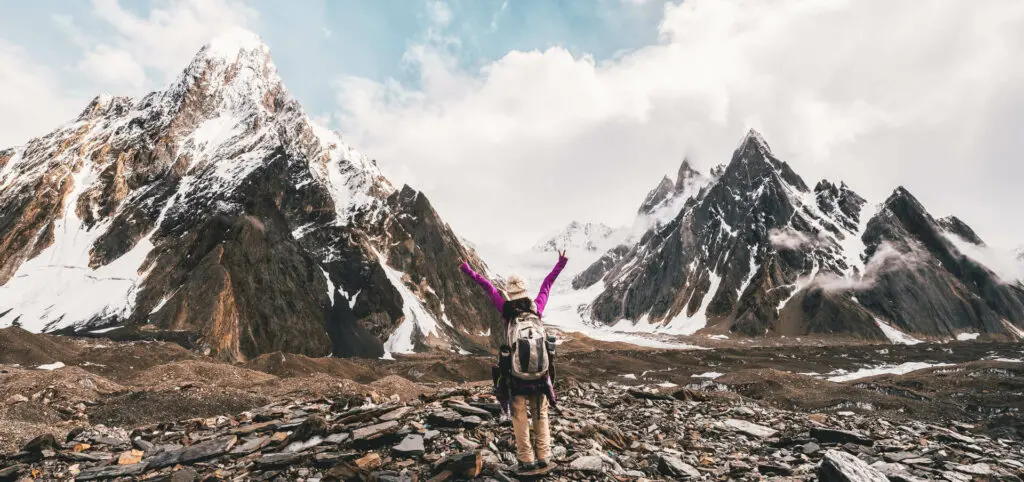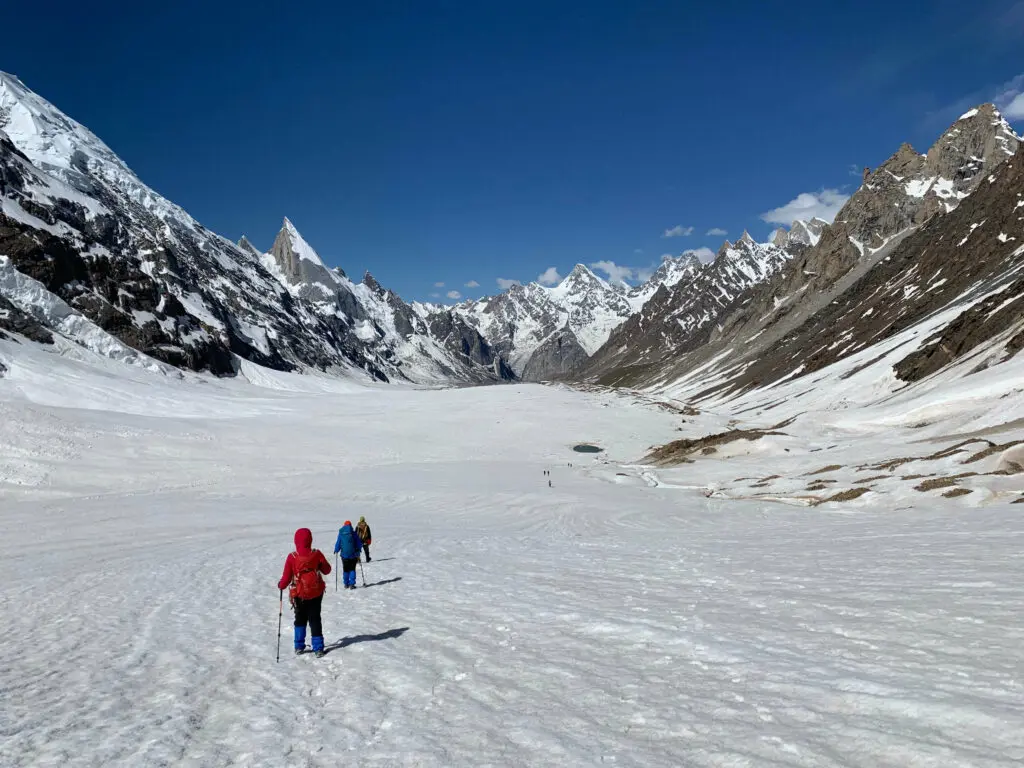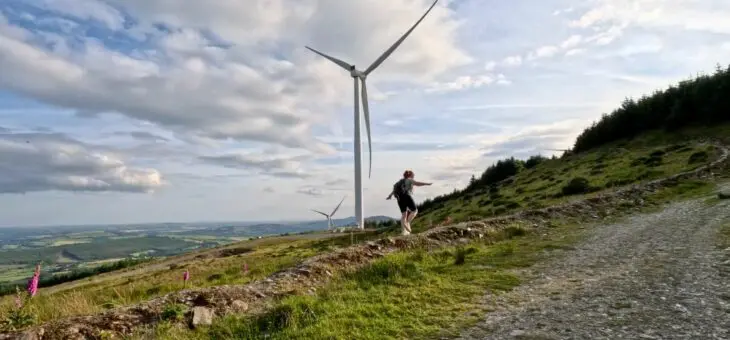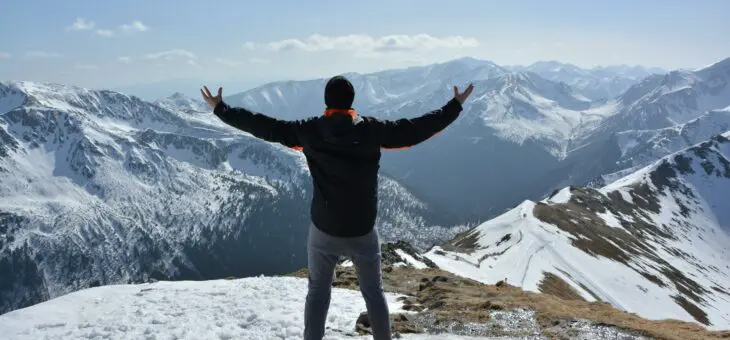Trekking to K2 Base Camp (5,400m) in Pakistan is arguably one of the most remote and iconic trekking adventures in the world. This journey through the rugged Karakoram Range leads you into what is often referred to as the “Throne Room of the Mountain Gods.” Here, you’ll encounter a stunning combination of breathtaking landscapes, challenging terrain, high altitudes, and unpredictable weather. Rated as a Level 7 expedition, this trek is demanding and rewarding in equal measure. But exactly how hard is it to trek to K2 Base Camp? In this guide, we’ll break down everything you need to know about the difficulty of this incredible trek.
Altitude Challenges: How High Is k2 Base Camp?
K2, the world’s second-tallest mountain, stands at an impressive 8,611m. Nestled at the foot of this iconic mountain, K2 Base Camp sits at 5,400m. This altitude is already quite significant and can present challenges, even to experienced trekkers.
However, the highest point of our trek is actually the Gondogoro La Pass, which reaches an altitude of 5,585m and is traversed on our descent. Trekking at such altitudes can lead to altitude sickness, making this trek physically demanding. Read about how to prevent altitude sickness here.

how fit do i need to be to trek to k2 base camp?
The difficulty of trekking to K2 Base Camp depends in part on your physical fitness. This is a demanding and fairly long trek, so good stamina and a high level of fitness are essential. While the trek to K2 Base Camp is not technical, it involves significant physical demands, including:
- Trekking Duration: Expect to trek an average of 6 to 8 hours per day, with some days extending up to 12 hours, particularly when crossing the Gondogoro La Pass on Day 17.
- Elevation Gain: Daily elevation gains range from 500 to 1,000m.
- Stamina and Strength: You should be comfortable with hillwalking and carrying a loaded backpack over challenging terrain for 8 hours per day across at least two consecutive days.
how to train for the demands of trekking to k2 base camp
The terrain on the K2 Base Camp trek is challenging, often rocky and uneven with steep ascents and descents in places. As a result, training for this trek requires a well-rounded approach, focusing on the following areas. It’s important to consult a professional before starting any new training program, especially if you have any pre-existing conditions. Your training plan should be tailored to your individual needs, and include:
- Cardio Training: Engage in regular cardio workouts to build endurance.
- Strength Training: Focus on building leg and core strength to handle the steep and uneven terrain.
- Hiking with Weight: Build endurance by practising long hikes. Add in carrying a loaded backpack to simulate trekking conditions.
- Mental Preparation: Practise mindfulness and mental resilience by spending time in varied outdoor environments with changing weather conditions.
You can also attend your designated training weekend in Glendalough, Co. Wicklow before the expedition. Led by experienced guides, you’ll receive a detailed briefing, go on hikes, and receive expert advice on all aspects of the expedition.
Do i need prior experience to trek to k2 base camp?
To successfully trek to K2 Base Camp, prior experience trekking in winter conditions and at high altitudes (above 5,000m) is recommended. Expeditions such as Kilimanjaro (5,896m) or our Three Passes Trek would be great experience for the challenges of trekking to K2 Base Camp!
While K2 Base Camp is a non-technical trek, you’ll need to use crampons to cross the Gondogoro La Pass. Depending on the conditions, fixed ropes may also be used to cross the pass safely.
You must be prepared to handle long days of trekking in a rugged, remote, and challenging environment, meaning that strong mental endurance is also vital when trekking to K2 Base Camp.

how long does it take to trek to k2 base camp?
Our K2 Base Camp expedition lasts 24 days, with 14 days of trekking. This duration not only tests your physical limits but also requires careful acclimatisation. That’s why our K2 Base Camp itinerary includes two rest days along the way.
We also go a little off the beaten track. Instead of retracing our steps after reaching K2 Base Camp, we traverse the Boltoro Glacier and cross the Gondogoro La Pass (5,585m) for an additional challenge. We then descend through the Hushe Valley in order to maximise our experience of the greater Karakoram range.
How does weather affect the difficulty of trekking to k2 base camp?
Trekking in the Karakoram range can mean facing unpredictable and often harsh weather conditions, including extreme cold and strong winds. We trek to K2 Base Camp in August, when temperatures can range from 0 to 30 degrees Celsius during the day and drop to -10 to 10 degrees at night. Lower temperatures, especially due to wind chill or sudden weather changes, can make the trek even more challenging. Usually the days are hot and the nights are cold.
Conclusion: is trekking to k2 base camp worth the challenge?
So, how hard is it to trek to K2 Base Camp? In short, it’s a physically and mentally demanding trek that requires a high level of fitness, preparation, and experience. However, while the trek to K2 Base Camp is undeniably demanding, it is also immensely rewarding! Stunning views, remote wilderness, and the sheer accomplishment of reaching the base camp of the world’s second-tallest mountain really does make this an adventure of a lifetime. And, with the right preparation it is very doable for most!
If you’re interested in trekking to the base camp of the world’s second-tallest mountain, visit our K2 Base Camp expedition page for dates and availability!
You can also book your free 15-minute K2 Base Camp trip consultation with one of our team here!






